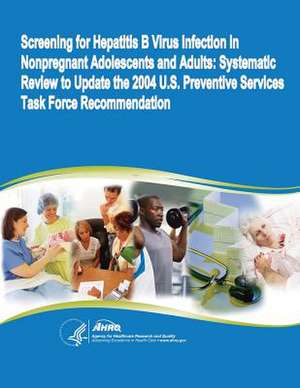Screening for Hepatitis B Virus Infection in Nonpregnant Adolescents and Adults
Autor U. S. Department of Heal Human Services, Agency for Healthcare Resea And Qualityen Limba Engleză Paperback
Preț: 159.56 lei
Preț vechi: 167.96 lei
-5% Nou
Puncte Express: 239
Preț estimativ în valută:
30.54€ • 33.19$ • 25.67£
30.54€ • 33.19$ • 25.67£
Carte disponibilă
Livrare economică 31 martie-14 aprilie
Preluare comenzi: 021 569.72.76
Specificații
ISBN-13: 9781500235420
ISBN-10: 1500235423
Pagini: 182
Dimensiuni: 216 x 279 x 10 mm
Greutate: 0.44 kg
Editura: CREATESPACE
ISBN-10: 1500235423
Pagini: 182
Dimensiuni: 216 x 279 x 10 mm
Greutate: 0.44 kg
Editura: CREATESPACE
